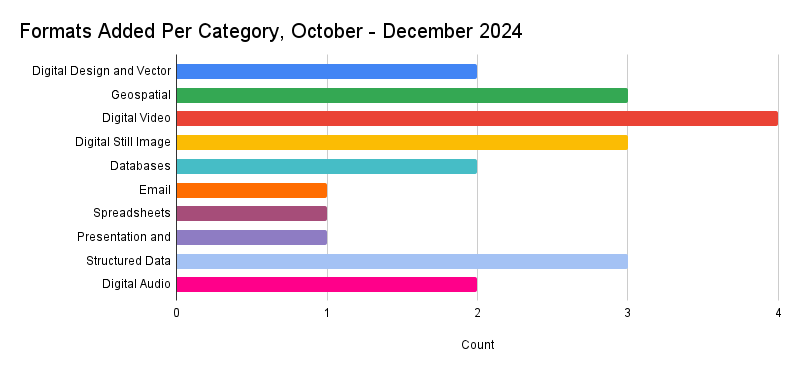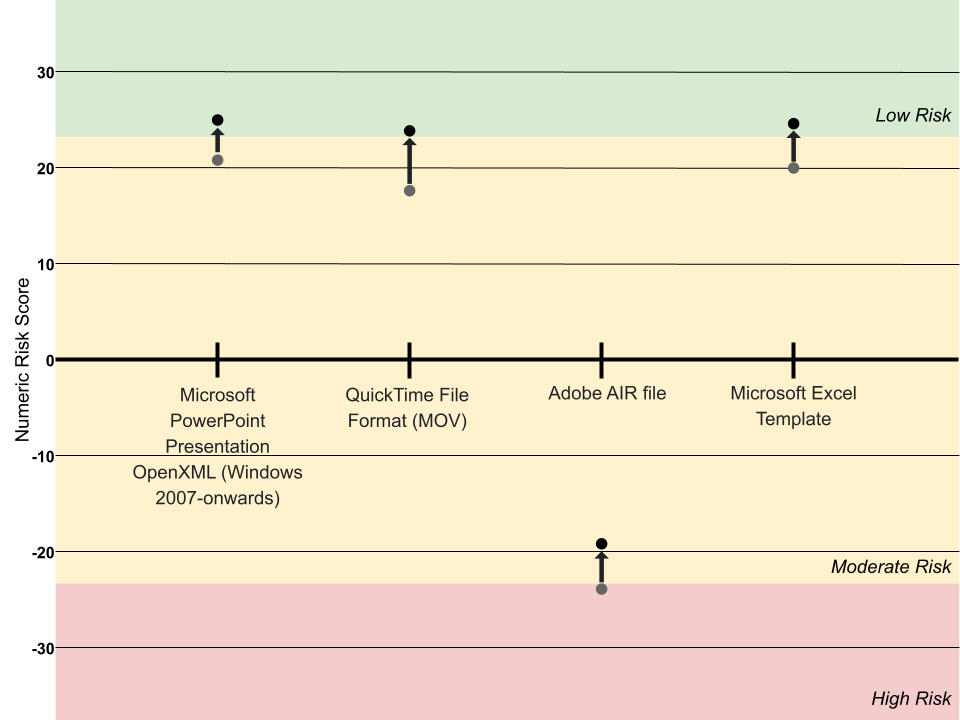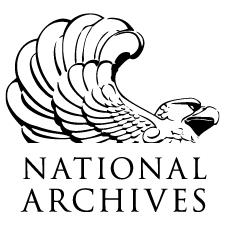This post was written by Mackenzie Beasley, Digital Preservation Specialist.
Happy New Year from Fixity Check!
The Digital Preservation Unit is happy to report a list of updates to the Digital Preservation Framework for this past quarter (October to December 2024).
New Formats
Fourteen new formats were added:
- Microsoft PowerPoint Presentation OpenXML (Windows 2007-onwards) Macro-Enabled (NF00853)
- SEG-Y rev 1 (NF00854)
- Microsoft Excel 5.0/95 Workbook (NF00855)
- Apple Mail Email File (NF00856)
- Filemaker Pro 3.0 (NF00857)
- Filemaker Pro 5.0 (NF00858)
- MPEG-1 Elementary Stream (NF00859)
- WebP Lossy (NF00860)
- Macintosh PICT 2.0 (NF00861)
- AV1 Image File Format 1.1 (NF00862)
- SEG-Y rev 2.0 (NF00863)
- SEG-Y rev 2.1 (NF00864)
- Adobe After Effects project (Binary Variant) (NF00865)
- Adobe After Effects project (XML Variant) (NF00866)

Together, this brings our total to 742 file formats.
Updated Record Category Preservation Action Plans
Four Record Category Preservation Action Plans were revised and updated with the help of internal specialists: Digital Audio, Digital Cinema, Digital Video, and Digital Still Image.
Updated Preservation Actions
SEG-Y rev 0 (NF00845), a format for seismic data storage, had its preservation action change from Transform to Retain: after consultation with subject matter experts, we determined that there are no formats suitable for storing seismic data that are more sustainable than SEG-Y.
Updated Risk Levels
Four formats had their risk level change: Microsoft PowerPoint Presentation OpenXML (Windows 2007-onwards) (NF00289) changed from Moderate to Low, QuickTime File Format (MOV) (NF00393) changed from Moderate to Low, Adobe AIR file (NF00705) changed from High to Moderate, and Microsoft Excel Template (NF00770) changed from Moderate to Low.
These formats all had their risk level change because we updated answers to questions around transparency and software dependencies in the Risk Matrix based on new information. There were no drastic changes to any of the scores, but each of these formats were on the border between two risk levels (High/Moderate or Moderate/Low), so updating the answer to just one question for a format could push it into another risk level. In general, risk levels may change due to new information being available or formats becoming “older” at the beginning of a new year, which impacts age-related risk calculations.

Updated Format Names
Digital Picture Exchange (DPX) was renamed to Digital Picture Exchange (DPX) 2.0 (NF00160) to better align with the format version being described and which is included in the NARA Transfer Guidance.
Deprecated NFIDs
Four NARA Format IDs (NFIDs) were deprecated since the numbers were never used and had been skipped over in previous years: NF00195, NF00274, NF00460, and NF00461.
Other Updates
Finally, we made various other changes based on the evolving needs of the Framework and its users:
- Age-related scoring factors were updated to reflect 2025 as the current year.
- Our GitHub repository was rearranged for better organization and ease of use.
- The column “Risk/Sustainability Factor Status” on the Risk Matrix was renamed to “NARA Risk Level” for consistency throughout the Framework.
- And after we received some feedback, we were happy to make copies of the record category plans available in Markdown and upload our record category action plan template.

As we move ahead in 2025 and reflect on 2024, our new Fixity Check blog has created an opportunity for our users to provide feedback, which we appreciate, and for us to respond with updates or provide more information on the Framework. We hope to continue to serve not only the National Archives but the digital preservation community as well.
